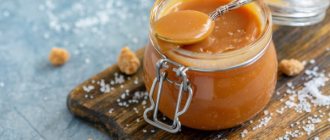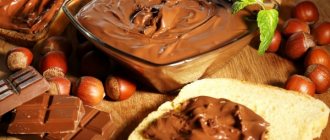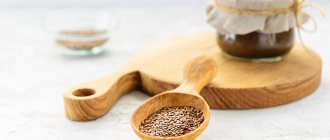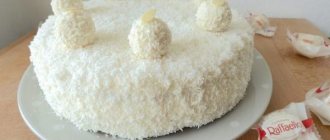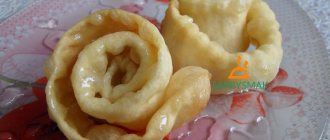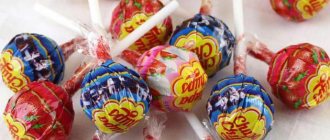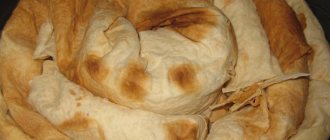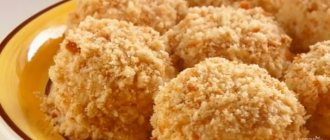Many people use butter every day. They make sandwiches with it, use it as an additive to porridge or pancakes. And although you can buy butter in any store, some people still cook it at home - simply because it turns out much tastier. This product is prepared from ordinary homemade milk or cream.
How it was done before
Oil is a product with a rich and respected history. It has been known and prepared for the last four thousand years. About 2 thousand years BC, oil was made in Egypt, India, and Mesopotamia. The Vikings were well acquainted with him. And, of course, the product was very popular in Rus'.
Our distant ancestors used cream, whole milk, and sour cream to make butter.
First, the raw materials were simmered in large pots, placing them in the oven. The oily substance, which separated under the influence of heat, was cooled and then beaten by hand. The product was expensive due to the complexity of production, high consumption of milk, and problems with its storage. To extend the shelf life, the finished oil was melted several times and washed with cold water. The result was the same famous melted product, which is still called “Russian butter” in the world.
In Europe, ghee is still called “Russian butter” - Russia was the largest supplier of the product
Despite the high fat content, real butter has a very high digestibility - about 95%. That is, it is almost completely consumed by the body.
The oil contains 40% monounsaturated oleic acid, which improves the body's lipid balance and even suppresses the activity of malignant cells. In addition, oil is a source of protein, calcium and fat-soluble vitamins, among which vitamins A and D are especially valuable for us. The latter, the “sun vitamin,” is quite difficult to obtain from food, but it is extremely useful in our harsh climate.
Natural butter has all these wonderful properties, the very same butter that has a shelf life of no more than 2 weeks. Do you already understand what the conclusion will be? If you want to see healthy and natural butter on your table, prepare it yourself.
Types of electric churns
We prepare ghee at home
To prepare ghee at home, take butter and put it in an enamel pan; if you take store-bought butter, then you need to cut it into pieces.
You need to heat it in a water bath or in a container with a thick bottom to prevent it from burning.
Heat oil over medium heat. At first, you don’t need to touch the oil for 10 minutes, then you need to stir with a wooden spoon. After about 15-20 minutes the oil will boil. You need to boil it for 7-10 minutes, stirring all the time.
After 30 minutes, the oil mixture will bubble quietly and begin to smell nutty. From time to time you need to stir and monitor the color change.
When the oil mixture turns orange and small bubbles appear on the surface, the oil needs to be strained.
Preparation will take a total of 45 minutes. Strain the oil through several layers of gauze, pouring it into a jar. Ghee can be stored in the refrigerator for a whole year.
Equipment for making butter
I have a good news. We don't have to use ancient technology for making this creamy delicacy. Several hundred years ago, human genius came up with a simple but effective device - the butter churn. Its modern versions are suitable for both home use and farming.
How does a butter churn work?
A modern butter churn is driven electrically or manually. A shaft with an impeller rotates inside, rotation is carried out by electricity or manually. The shaft whips cream or sour cream. During the process of rotation and whipping, an oil grain is formed, which after a few minutes forms an oil clot. At the same time, the liquid fraction – whey or buttermilk – is separated.
Periodically, the device is opened and the condition of the oil clot is assessed.
How to choose a butter churn
The operating principle of butter churns is the same: during the whipping process, the cream is separated into liquid and oil fractions. But the types of drives, performance, volumes and materials used to manufacture devices can indeed vary.
- For your own household, it is better to buy an electric churn. This device allows you to process tens of liters of milk in one cycle.
- For home use, you can buy a small-capacity electric butter churn if you constantly prepare butter. Such devices are designed to prepare from 2 to 5 kg of oil at a time.
- Manually driven butter churns are independent of electricity, so it is convenient to work with them outdoors, for example in a summer cottage. In addition, they are usually relatively inexpensive. Among them there are also very compact models.
Miniature manual butter churn with plastic blades
Various materials are used to make butter churns. I advise you to pay attention, first of all, to the material of the internal parts. It is preferable that the motor, shaft and blades be made of metal.
The body of modern butter churns is usually made of plastic or stainless steel. There are butter churns made of polycarbonate and even glass.
The greater the planned load, the stronger your churn should be. For constant work in your own household, choose a stainless steel device, you can’t go wrong. Impact-resistant plastic is also suitable for home use.
Sea buckthorn oil
Here is one recipe on how to make sea buckthorn oil at home. Take ripe fruits and wash them well under the tap. We put them in the grinder glass and grind them at accelerated speed. We get a mixture with seeds and skins.
Next, pour the sea buckthorn mass into a sieve and squeeze out the juice with a spoon. The juice will turn out orange with foam. Pour the juice into a jar and add 2 ml of refined oil. We place this container in a dark place for a day.
Sea buckthorn oil will appear on the surface of the jar within a day. You need to collect it with a small spoon. We prepared sea buckthorn oil.
Making essential oil
Before you consider how to make essential oil at home, you need to know which parts of the plant are best suited for this.
In different plants, the percentage of oil in different parts is greater or less. To prepare essential oil, the raw materials can be taken from plants growing in the country or collected in nature.
In order to make oil, dried raw materials are also suitable.
Let's make calendula oil
To make calendula oil, you need to collect only the flower without the stalks. Take 1 part crushed flowers and 5 parts vegetable oil.
The best oil is olive oil, but you can use any oil. It is infused for three weeks, then squeezed out and filtered.
This healing oil is used to treat bruises, wounds and cuts. Watch the video on how to make butter at home.
How to shape homemade butter
If you want to get a perfectly smooth piece of butter with a beautiful shape, then you will need a plate and sleight of hand. Place the butter, separated from the buttermilk, washed and squeezed out of water, into a deep plate. The piece should be of such a size that it can roll slightly across your dish. Now start tossing the oil a little. This will knock out excess water and make the surface of the product smoother. The oil must not only be tossed, but also rolled over the plate. Using a plate, you will get a piece of butter, free of residual water, with a smooth surface and a regular oval shape.
Making your own coconut oil
Is it possible to make coconut oil at home and how? You can cook it; to do this, take a good coconut and drain the water through one of the spouts.
We break the hard shell, cut the fruit and peel off the thin skin with a knife. There should be no mucus or stains inside, just white flesh.
Rinse the pulp with running water. Cut it into pieces and put it in a powerful blender. You need to add warm coconut water, and then just enough water to cover the pulp. Let stand for 5 minutes.
Grind again with a chopper to a mushy consistency. It needs to be strained and squeezed thoroughly. Pour the resulting liquid into a bowl and place in the refrigerator for 4 hours.
The mixture should sit and there will be hardened pure coconut oil at the top. Make 2 holes with wooden chopsticks and drain the liquid. The coconut oil is ready and can be stored in the refrigerator for 2 weeks.
Recipes: what you can use to make butter
Butter can be prepared from cream, sour cream, goat, cow, and sheep milk. Here are a few classic recipes that you can add to your taste.
Sour cream or cream for making butter requires at least 25% fat content
Sour cream butter
You will need 1 kg of sour cream with a fat content of 25% and 5 liters of chilled water.
- Beat the butter at high speed until it separates into butter grains and buttermilk.
- Drain the buttermilk.
- Rinse the oily liquid with cooled water several times. It is convenient to use a sieve for this.
- Squeeze with your hands.
- Form a lump or bar from the butter, wrap it in cling film and store in the refrigerator.
Sour cream butter has a subtle sourness.
Butter from cream
Cream can be obtained from whole milk. For this purpose, a separator is used, two bowls of which operate on the principle of a centrifuge. To make butter, the cream will have to be pasteurized to make it biologically safe.
You will need 1 liter of fresh cream and about 5-7 liters of chilled water.
- Whip the cream in a butter churn. You can start with low power, and after 5 minutes increase the speed to maximum.
- When the cream turns white and reduces in volume, you can add salt, spices or herbs.
- Continue beating until the mass is divided into fractions.
- Place portions of butter and buttermilk in a sieve. Let the buttermilk drain, rinse the butter with chilled water, squeeze out with your hands and place on a paper towel to drain.
- After this, knead the butter, squeeze and form a lump.
- Then wrap it in film and put it in the refrigerator.
Butter made from cream has a sweetish and delicate taste.
Butter from milk
Butter is not made from milk as such; cream must first be extracted from it:
- using a separator (special device);
- manually by infusion.
On average, from 3 liters of full-fat milk you can get up to 700 ml of cream. This will be our starting raw material, from which 35–50% of the finished product is obtained. That is, from 3 liters of milk you will get about 350 grams of butter.
The step-by-step process looks like this:
- Pasteurize the milk and leave for two days to raise the cream. To speed up the process, you can use a separator.
- Beat in a butter churn until separated into fractions.
- Drain the buttermilk.
- Rinse the oil with ice water.
- Squeeze out the water.
- Mash the butter and collect it into a ball.
- Leave on a paper towel to allow any residual liquid to drain.
- Store the oil in the refrigerator.
